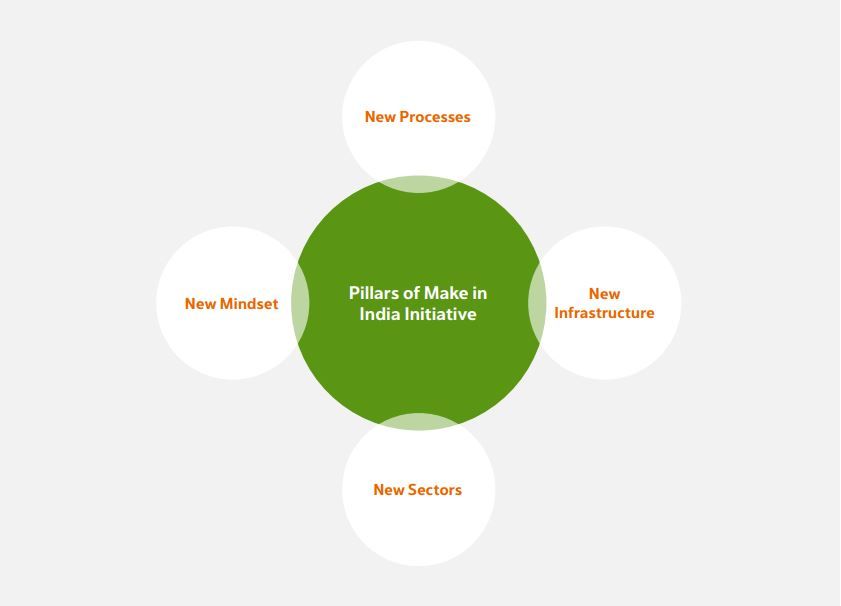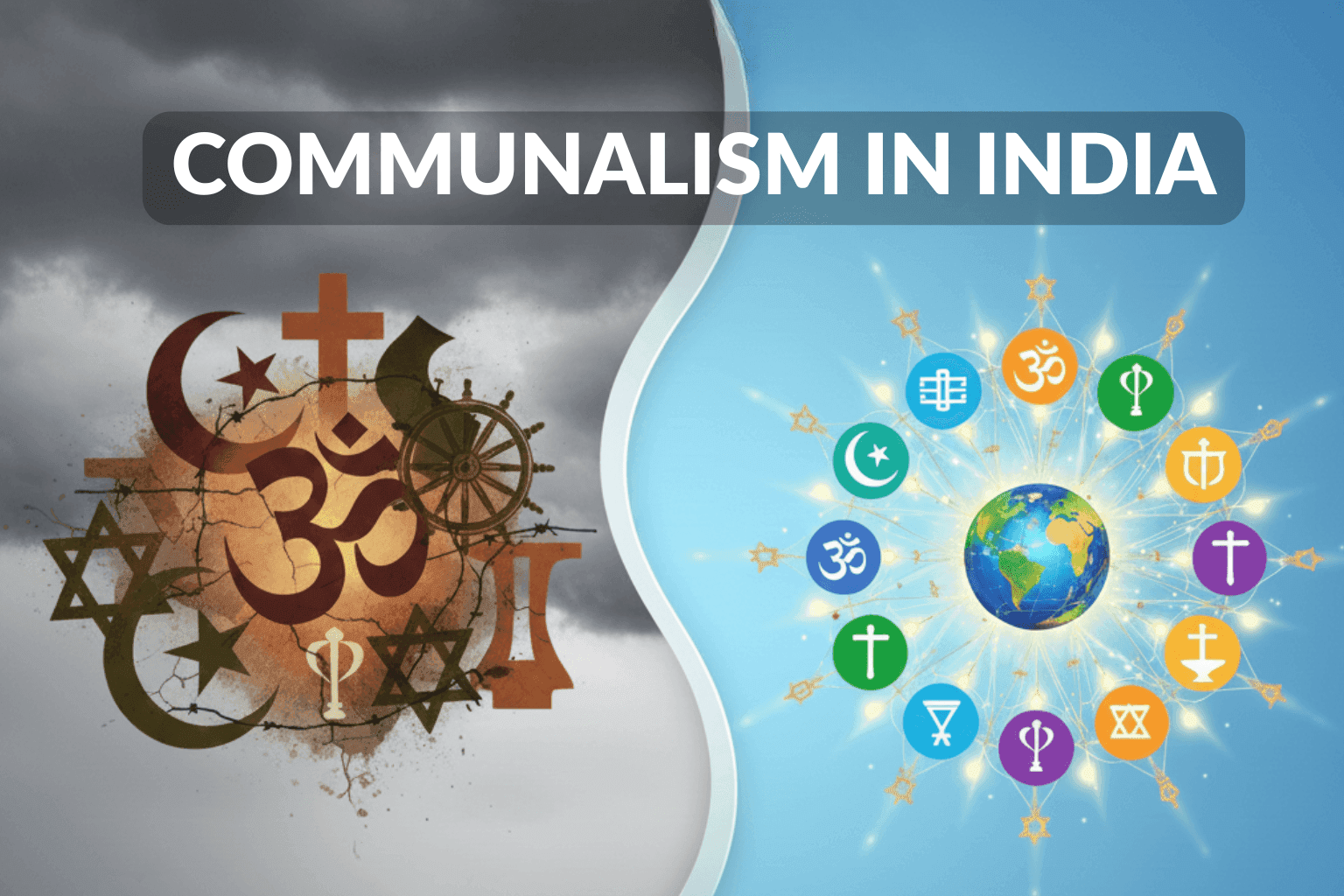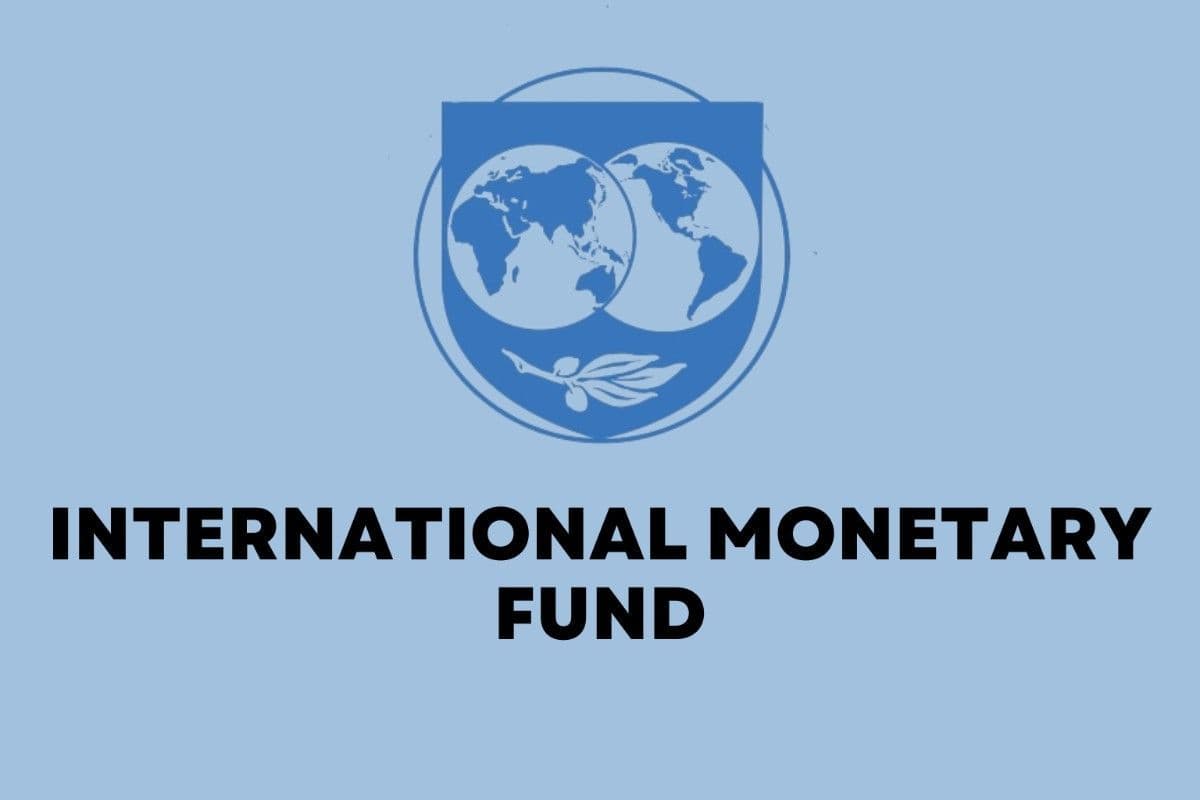Make in India UPSC Notes: Pillars, Objectives, and Key Infrastructure Schemes
Oct, 2025
•4 min read
The Make in India initiative is one of the most significant policy drives launched by the Government of India to transform the country's manufacturing sector.
Understanding the background, objectives, achievements, challenges, and impact is crucial for comprehending the UPSC Prelims and Mains syllabus coverage.
What is Make in India?
The Make in India initiative was launched by the Government of India on September 25, 2014, under the leadership of Prime Minister Narendra Modi.
This initiative was designed to transform India into a global manufacturing hub by facilitating investment, fostering innovation, building world-class infrastructure, and enhancing skill development.
Key Facts about Make in India
- Under the Ministry of Commerce and Industry.
- Implemented by the Department for Promotion of Industry and Internal Trade (DPIIT).
- Make in India 2.0 currently focuses on 27 sectors, including 15 manufacturing and 12 service sectors.
- India recorded FDI inflows of USD 81.04 billion in FY 2024-25, marking a 14% increase.
- India became the second-largest mobile phone manufacturer globally.
- India’s Pharmaceuticals is the 3rd largest producer by volume globally and the largest supplier of generic drugs (20% global share).
- India is the sixth-largest exporter of textiles and apparel.
Objectives of the Make in India Initiative
The initiative aims to create a business-friendly environment and position India as a preferred manufacturing destination globally.
- To increase the manufacturing sector's growth rate to 12-14% per annum.
- To create 100 million additional manufacturing jobs in the economy.
- To ensure the increased manufacturing sector's contribution to GDP.
- Transform India into a global hub for design, manufacturing, and innovation.
- Attract foreign direct investment and make India part of global supply chains.
Also read: Unemployment in India UPSC Notes: Types, Causes & Government Measures
Four Pillars of Make in India
The Make in India initiative is built on four fundamental pillars that create a conducive environment for manufacturing growth and entrepreneurship development across all sectors.

- New Processes: Recognises ease of doing business as the most important factor, aiming to de-license and de-regulate industry throughout the business lifecycle.
- New Infrastructure: Focuses on developing industrial corridors and smart cities with state-of-the-art technology, high-speed communication, and integrated logistics.
- New Sectors: Initially identified 25 sectors, now expanded to 27 sectors under Make in India 2.0, with significant FDI liberalisation.
- New Mindset: Government acts as a facilitator and partner rather than a regulator, creating a collaborative environment for industry.
Also read: Five-Year Plans of India: Complete Notes for UPSC
Key Sectors Powering Make in India
Make in India 2.0 currently focuses on 27 priority sectors divided between manufacturing and services.
A. 15 Manufacturing Sectors (Co-ordinated by DPIIT):
| 1. Aerospace and Defence | 2. Automotive and Auto Components | 3. Pharmaceuticals and Medical Devices |
|---|---|---|
| 4. Bio-Technology | 5. Capital Goods | 6. Textiles and Apparel |
| 7. Chemicals and Petrochemicals | 8. Electronics System Design and Manufacturing (ESDM) | 9. Leather and Footwear |
| 10. Food Processing | 11. Gems and Jewellery | 12. Shipping |
| 13. Railways | 14. Construction | 15. New and Renewable Energy |
B. 12 Service Sectors
| 1. Information Technology and IT-enabled Services (IT & ITeS) | 2. Tourism and Hospitality Services | 3. Medical Value Travel |
|---|---|---|
| 4. Transport and Logistics Services | 5. Accounting and Finance Services | 6. Audio Visual Services |
| 7. Legal Services | 8. Communication Services | 9. Construction and Related Engineering Services |
| 10. Environmental Services | 11. Financial Services | 12. Education Services |
Flagship Projects Under the Make in India Mission
Several projects and initiatives have been launched under Make in India to boost manufacturing capabilities and create employment opportunities across the country.
- The National Industrial Corridor Development Programme (NICDP) is developing 11 industrial corridors, including the Delhi Mumbai Industrial Corridor (DMIC), Chennai Bengaluru Industrial Corridor (CBIC), and Amritsar Kolkata Industrial Corridor (AKIC).
- 20 Greenfield Industrial Smart Cities across 11 corridors with world-class plug-and-play infrastructure.
- Four operational cities (Dholera in Gujarat, AURIC in Maharashtra, Greater Noida in Uttar Pradesh, and Vikram Udyogpuri in Madhya Pradesh) have attracted over $20.6 billion in investment.
- PM Gati Shakti National Master Plan: Digital platform integrating 16 ministries for coordinated infrastructure development.
- Infrastructure schemes such as Bharatmala and Sagarmala, for road and port connectivity.
- Building BharatNet, the world's largest rural broadband project, enhancing digital connectivity.
Multiple Choice Questions
QUESTION 1
Easy
Which of the following is the primary objective of the Make in India initiative?
Select an option to attempt
Significance of Make in India
The 'Make in India' initiative has transformed India's industrial sector and positioned the nation as a competitive global manufacturing hub over the past decade.
- FDI inflow reached USD 81.04 billion in FY 2024-25, with cumulative FDI touching USD 1.05 trillion since 2000.
- India supplies 50% of the world's vaccines and 40% of its generic medicines.
- Unemployment rate declined from 6.0% in 2017-18 to 3.2% in 2023-24.
- The manufacturing sector grew 5.40% year-on-year in July 2025.
- India is projected to become the world's third-largest economy by 2030 with a USD 7.3 trillion GDP.
What Challenges are Slowing Down the Make in India Vision?
The Make in India program still faces major problems that slow down its growth and competitiveness. The government needs to take focused steps to strengthen India’s manufacturing industry.
- Financial Constraints: Limited access to formal credit restricts MSME growth and modernisation..
- Technological Gaps: High implementation costs and limited awareness prevent the adoption of modern technology.
- Skill Shortages: An inadequately skilled workforce restricts productivity and global competitiveness.
- Regulatory Hurdles: Complex compliance requirements increase administrative costs and burden enterprises.
- Low R&D Investment: Inadequate research and development hampers innovation.
- Infrastructure Gaps: Insufficient industrial infrastructure and logistics networks limit efficiency.
Recent Developments Under Make in India
Make in India recently celebrated its 11th anniversary, with Prime Minister Modi highlighting its role in making India self-reliant and boosting manufacturing.
- The initiative aims to produce everything domestically and supports "Atmanirbhar Bharat."
- Defence manufacturing is growing, with AK-203 rifles production starting in Uttar Pradesh with Russia.
- Uttar Pradesh makes 55% of India’s mobile phones and is important in semiconductor manufacturing.
- The Uttar Pradesh International Trade Show showcased India’s global partnerships.
- Recent GST reforms have helped small industries and traders.
This shows ongoing government efforts to grow manufacturing, create jobs, and strengthen the economy through Make in India.
UPSC Mains Practice Question
Discuss the progress made so far in the 'Make in India' program. What are the various challenges to the initiative?
Evaluate Your Answer Now!Way Forward
As our honourable Prime Minister Narendra Modi aptly stated, “‘Make in India’ illustrates the collective resolve of 140 crore Indians to make our nation a powerhouse of manufacturing and innovation.” This vision reflects India’s long-term commitment to building an Atmanirbhar and Viksit Bharat.
To achieve its goals, Make in India needs strategic reforms across infrastructure, skills, technology, and regulation.
- Focus on ease of business, workforce readiness, MSME support, and Clean Tech manufacturing.
- Skill development for Industry with automation and AI through government-private collaboration.
- Increase R&D investment in semiconductors, biotechnology, robotics and encourage public-private partnerships.
- Strengthen MSMEs with enhanced credit guarantee.
Power Your UPSC Prep with SuperKalam
Get 24x7 AI mentorship with unlimited subject-wise MCQ practice, Instant mains answer evaluation, and NCERT MCQ practice. Prepare better, faster, and smarter.
Start your free trial today!


